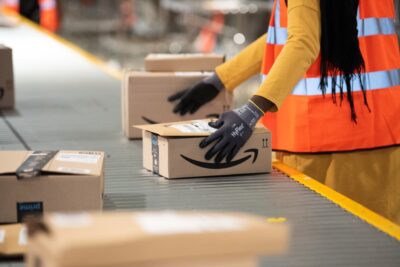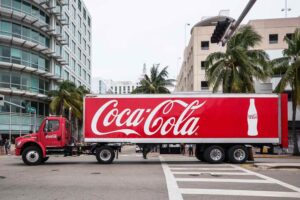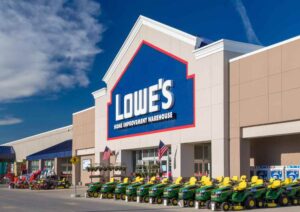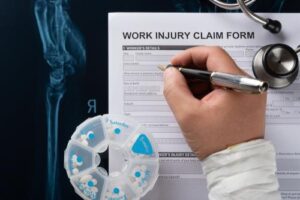
Amazon is one of the world’s largest employers, boasting hundreds of thousands of employees around the globe. Every day, countless workers perform their roles in warehouses, delivery vehicles, and other environments within the organization.
But what happens when an Amazon worker gets injured on the job? Do they have any legal recourse against their employer? Let’s dive into this complex issue.
Understanding Workers’ Compensation
Before discussing the specifics of lawsuits against Amazon, it’s essential to understand the broader framework of workers’ compensation. In the United States, workers’ compensation is a form of insurance that provides wage replacement and medical benefits to employees injured during employment. This system is designed to provide swift and sure compensation without requiring the injured worker to prove that the employer was at fault for the injury.
The catch with workers’ compensation is that employees typically give up their right to sue their employer for negligence by accepting these benefits. This system is called the “exclusive remedy” provision in workers’ compensation laws. This means that in most cases, employees cannot sue their employer if they are hurt.
However, like most laws, there are exceptions. These exceptions vary by state and case specifics but could include instances where the employer’s conduct was intentionally harmful or egregiously negligent.
Get the strong arm
Amazon’s Role as Employer: The Legal Landscape
Regarding Amazon, the same principles of workers’ compensation apply. If an employee is injured on the job, they generally file a claim for workers’ compensation benefits. However, there have been cases where Amazon workers have sought to bypass this system and bring a lawsuit directly against the company.
These lawsuits typically argue that Amazon’s practices, such as setting high quotas or providing insufficient safety training, create an unsafe work environment. This is where things get tricky. To successfully sue Amazon (or any employer), an employee must show that the employer’s conduct went beyond mere negligence and rose to a “deliberate intent to injure.”
There’s a high legal threshold to meet for this claim. It’s not enough to show that the employer was aware of a potential danger; the employee must generally show that the employer knew with a high degree of certainty that an injury would occur and ignored the risk.
Cases Against Amazon: Precedents and Outcomes
Several high-profile cases against Amazon illustrate these points. In 2020, a group of workers at an Amazon warehouse in Staten Island, New York, filed a lawsuit claiming that the company’s practices had contributed to the spread of COVID-19 among employees. The plaintiffs argued that Amazon had failed to follow public health guidelines and had created a “public nuisance.”
In another case, an Amazon employee in California filed a lawsuit for workers facing long waits without pay to undergo mandatory security checks. They alleged that the company’s requirement violated state labor laws.
While these cases demonstrate that lawsuits against Amazon are indeed possible, it’s important to note that success is not guaranteed. In both cases, the legal challenges were complex and required substantial evidence to move forward.
What to Do if You’re Injured on the Job at Amazon
If you’re an Amazon employee injured on the job, your first step should be to report the injury to your supervisor and seek immediate medical attention. Although it varies from state to state, most worker’s compensation programs require that you notify your employer within 30 days.
If you believe Amazon’s intentional or egregious conduct caused your injury, you may want to consult with a personal injury lawyer. These professionals can help you understand your legal options and decide whether a lawsuit against Amazon is viable.
Amazon Delivery Drivers: Employees or Independent Contractors?
In the case of Amazon delivery drivers, the situation is a bit more complex. Amazon directly employs some drivers, but many are employed by third-party delivery companies or as independent contractors under Amazon’s Flex program.
The drivers’ classification as employees or independent contractors significantly impacts their ability to sue Amazon. If drivers are classified as employees, they typically cannot sue their employer for injuries on the job because they are covered under workers’ compensation insurance. If they are independent contractors, they’re not eligible for workers’ compensation and may sue if they believe Amazon is responsible for their injuries.
Amazon has faced several lawsuits where drivers claim they were misclassified as independent contractors and should have been given the protections offered to employees, including workers’ compensation coverage. Success on the part of the plaintiffs has varied from case to case.
Warehouse Workers: Are They Protected?
Warehouse workers who are directly employed by Amazon and injured on the job generally cannot sue Amazon due to workers’ compensation laws. Workers’ compensation operates as an exclusive remedy, meaning that workers cannot sue their employers for workplace injuries in most cases.
However, there may be exceptions where a lawsuit against Amazon can occur. For instance, if a warehouse worker can prove that Amazon intentionally caused their injury or that Amazon failed to provide a safe working environment, they may be able to sue for damages beyond workers’ compensation benefits.
Additionally, if the injury was caused by a third party, like a defective piece of equipment, the worker might have a case against the manufacturer of that equipment. In such situations, Amazon might also be a co-plaintiff if they suffered losses due to defective equipment.
Whistleblower Protections
Whistleblower protections can also come into play when discussing injuries at Amazon. These protections are designed to shield employees who report unsafe conditions or legal violations from retaliation by their employer. The Whistleblower Protection Act safeguards employees who expose information they reasonably believe provides evidence of any of the following:
- A violation of law, rule, or regulation
- Gross mismanagement
- Gross waste of funds
- Abuse of authority
- A substantial and specific danger to public health or safety
If an Amazon worker is injured after reporting a dangerous situation, they may be able to bring a whistleblower protection claim. This scenario adds another layer of complexity to the legal landscape surrounding injuries on the job at Amazon.
The Impact of Technological Advances
Finally, technological advances could have significant implications for workplace safety at Amazon. The company has increasingly incorporated technology and automation in its warehouses, which could lead to fewer physical injuries. However, this shift also raises new safety concerns, such as the risks associated with interacting with machinery or the health implications of sedentary work.
As Amazon continues to innovate, legal standards must evolve to address new types of potential harm. It remains to be seen how these changes will impact workers’ ability to sue Amazon for injuries sustained on the job. Legal professionals, policymakers, and advocates must stay abreast of these developments to protect workers’ rights.
If you have been injured on the job working for Amazon, you may need experienced legal representation to secure the compensation you are entitled to seek. Contact John Foy & Associates today to “Get The Strong Arm” on your side and answers your questions.
(404) 400-4000 or complete a Free Case Evaluation form





